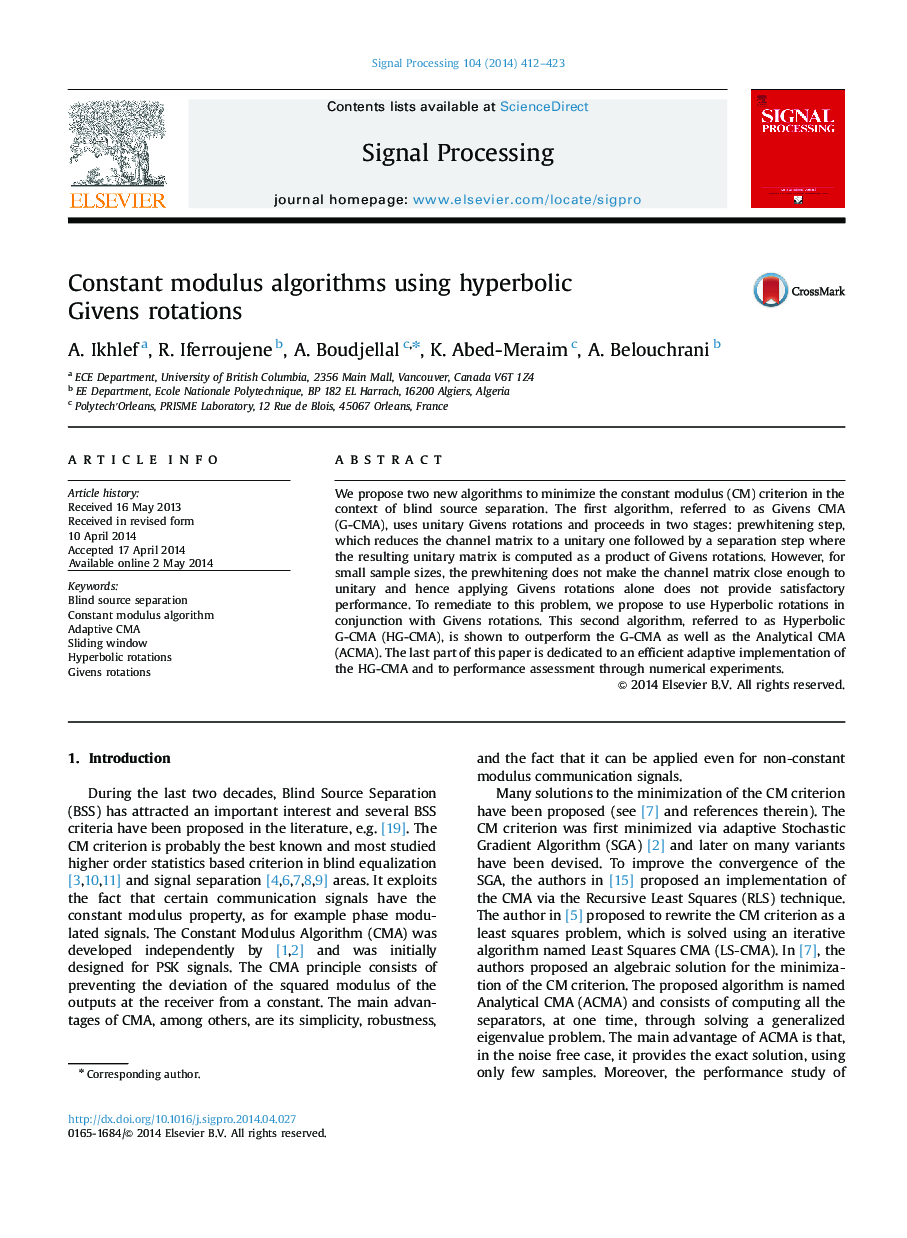| Article ID | Journal | Published Year | Pages | File Type |
|---|---|---|---|---|
| 563787 | Signal Processing | 2014 | 12 Pages |
•We introduce two new algorithms for blind sources separation.•They are based on the optimization of Constant Modulus Criterion.•We compare our algorithms with two classical ones.•For hard situations, our algorithms perform better.
We propose two new algorithms to minimize the constant modulus (CM) criterion in the context of blind source separation. The first algorithm, referred to as Givens CMA (G-CMA), uses unitary Givens rotations and proceeds in two stages: prewhitening step, which reduces the channel matrix to a unitary one followed by a separation step where the resulting unitary matrix is computed as a product of Givens rotations. However, for small sample sizes, the prewhitening does not make the channel matrix close enough to unitary and hence applying Givens rotations alone does not provide satisfactory performance. To remediate to this problem, we propose to use Hyperbolic rotations in conjunction with Givens rotations. This second algorithm, referred to as Hyperbolic G-CMA (HG-CMA), is shown to outperform the G-CMA as well as the Analytical CMA (ACMA). The last part of this paper is dedicated to an efficient adaptive implementation of the HG-CMA and to performance assessment through numerical experiments.
